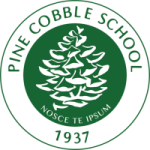Mammoth bones and Monticello: first grade, learning fully
Written by Christy Richardson on January 31, 2012
One of the things we love here is exploring the connections between subject matters. In real life, there are no artificial boundaries between science and language, between math and art, between good health and good learning. Highlighting the connections that exist in the world — going deeply into them and exploring where they take us — is what keeps subject matter alive. It’s also what makes kids learn more, retain more, and try harder.
We approach education this way in all grades, but we recently came across a newsletter from Miss Cummings about some of the things happening in first grade – it’s a perfect articulation of what kids get, and why. We thought it was worth excerpting here:
We are focusing on consonant blends and the “where” predicate expander in language arts. We are having lots of fun “stirring” the sounds of the consonants to blend them together. The initial introduction was very exciting with sugar and cocoa mixed together; once they are mixed there is no separating them! The same is true for the sounds in the blends. This is a great way to teach this concept that is fun and is a concrete concept for the children to see.
Math and social studies have made a lovely connection. We have been learning “the story of money.” This has entailed exploring coins — we’ve done the penny and nickel so far, which has allowed us to learn about Abraham Lincoln and Thomas Jefferson. We figured out how many presidencies lay between them and talked about life during those time periods. We will discover more facts as time goes on.
We have also been doing lots of problem solving through number stories, the “throwing out game,” and figuring out the best way to make numbers using the fewest number of coins.
In social studies we have continued to read The Mystery of the Mammoth Bones, about naturalist Charles Willson Peale’s 1801 discovery of mammoth bones on a farm in upstate New York. It’s is an excellent read that has lots of great vocabulary and historical facts. We had a climatic moment when Charles Peale and his son finally found a jawbone. Everyone cheered with excitement! As Charles Peale perseveres to discover a complete skeleton of the woolly mammoth, he finds himself needing additional funding to complete his project. As it turns out, Thomas Jefferson makes it possible for him to continue by securing funding for the remainder of the search. The book refers to lots of different amounts of money, and we have been adding and subtracting as we go along with Charles Peale! It was really neat to hear many of the children say, “He lived at Monticello!” regarding Thomas Jefferson. We will continue on with both of these activities – The story of money and reading this amazing book!
We also reviewed all we know about the last ice age, the resultant land bridge, and compared the woolly rhinoceros, woolly mammoth, and the mastodon for similarities and differences. Next stop….early humans!
We can’t wait for the update!
